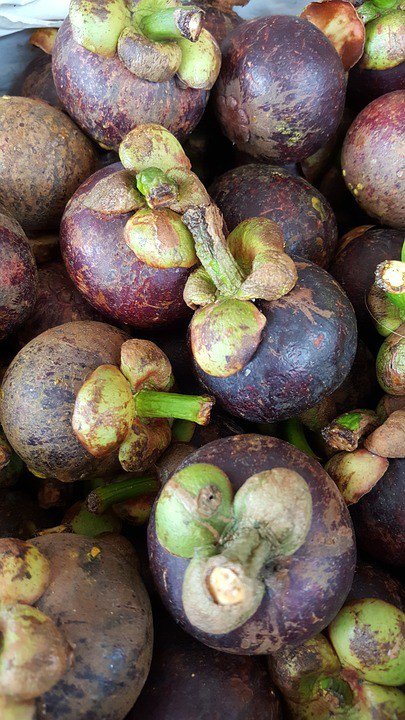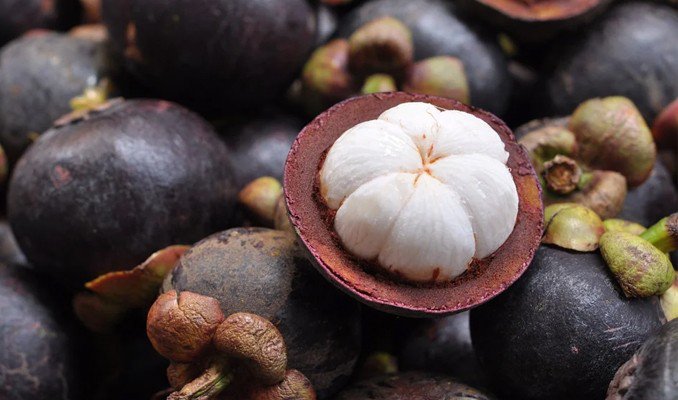Mangosteen was once banned in the U.S., but they are now available again for purchase. This tropical fruit has a sweet and sour taste and very juicy when it’s riped. Due to their sweetness, the fruit can be eaten raw or added to smoothies or tropical fruit salads for that unique flavor. For those who love mangosteens, they will probably buy a lot of to store at home. Therefore, most will wonder how long mangosteens will last.
So how long do mangosteens last? At room temperature, ripe mangosteens will last for a couple of days, while unripe mangosteens will last 1-2 weeks. In the fridge, mangosteen will last for 3 to 4 weeks.
In this short guide, we’ll go through the shelf life of the mangosteen fruit, how to properly store them, how to tell when they go bad, and how to keep them fresh longer. If this is what you’re looking for, continue reading.
Mangosteen Shelf Life
| Room Temperature | Refrigerator | Freezer | |
|---|---|---|---|
| Mangosteen (ripe) last | 2-3 Days | 15-20 Days | Not Recommended |
| Mangosteen (unripe) last | 1-2 Weeks | 7-14 Days | Not Recommended |
| Puree last | Not Recommended | Not Recommended | 1 Year |
How Long Do Mangosteens Last?
At room temperature, ripe mangosteens will last for a couple of days. They will last a bit longer if the room temperature is cool.
Ripe mangosteens keep well for 3 to 4 weeks in storage at 40º to 55º F (4.44º-12.78º C) according to Purdue University. Therefore, the fridge is the best place for long-term storage.
Unripe mangosteens will last 1-2 weeks at room temperature. However, their shelf life can be shorter or longer depending on how cool or warm the room temperature is. The cooler the temperature of the room, the longer mangosteens will last. On the other hand, the hotter the room is, the shorter their shelf life will be.
As for the fridge, unripe mangosteens will last for a month or longer. However, it’s not recommended to store them in the fridge for that long. When unripe mangosteens are stored in the fridge, the ripening process will slow down. However, the fruit will continue to ripe. Since the fruit is ripening prematurely, it won’t taste very good when you eat it.
The freezer will keep the mangosteen fresh for up to a year. However, it’s not recommended to freeze mangosteen as the flesh will be damaged from the freezing temperature.
How To Store Mangosteens
At room temperature, ripe mangosteens should be stored where it’s cool and dry. The cooler the place of storage the longer they will last. Good location for storing mangosteens are the pantry and cupboards.
If the fruit is going to be eaten within a day, storing them on the countertop or anywhere in the kitchen should be fine. Make sure to keep them away from direct sunlight and other heat sources. The heat will harden the rind of the fruit and cook the inside of it. What you’ll get is a watery and mushy flesh that will taste bad.
In the fridge, ripe mangosteens should be stored in a plastic bag or an airtight container. The thick rind on the mangosteens will help prevent the fruit from going bad, while the plastic bag or container will help retain their moisture.
As for unripe mangosteens, at room temperature, the fruit should be stored in a cool and dry place. Avoid storing them in direct sunlight and near any other heat source. The heat can actually cause the fruit to prematurely ripen and make the fruit uneatable.
If you need to ripen the mangosteen faster, simply put them in a paper brown bag along with an apple, bananas, pears, or even an avocado. These fruits contain ethylene which will accelerate the ripening process of the mangosteen. Depending on how unripe the mangosteen is, it can ripen overnight or in a day or so.
As for the fridge, it’s not recommended to store unripe mangosteens. Storing them in the fridge could prematurely ripen the fruit. While the fruit is being stored in the fridge, the cool temperature will prevent it from ripening normally. When this happens, the fruit won’t be able to develop the sweet and sour taste.
Can You Freeze Mangosteens?
Unlike mangoes, mangosteens should never be frozen whether it’s ripe or unripe. Freezing them will damage the flesh of the fruit.
The mangosteen fruit will actually freeze in the freezer very well. The issues arise when the fruit thaw. As it thaws, the flesh will become watery and mushy. For most people, just the look of it, it will prevent them from eating it.
However, if you’re planning to use mangosteens to make a fruit smoothie or a dessert, frozen mangosteens will work great. Otherwise, it won’t be very tasty eating it fresh.
How To Keep Mangosteens Fresh Longer
Buying Mangosteens
At the grocery store, always buy quality mangosteens which will ensure they stay fresh for a long time. Before buying this delicious fruit, there are some signs to look for. Unlike other fruits, mangosteen is a bit tricky to tell bad ones from the good ones.
One of the signs to look for is the tears and cuts on the rind. Sure, the fruit has a thick rind that’s difficult to break open, but it can break open during harvesting and being transported to the grocery stores. If the fruit has a crack in the rind, the flesh is exposed to the air. This will cause the fruit to prematurely go bad due to oxidation and bacterial growth.
Another sign to look for is the hardness of the fruit. If the fruit is hard, it could mean the mangosteen is either unripe or it has gone bad. One way to tell them apart is to pick one up and see if it’s light or heavy in weight. Unripe mangosteens will have some weight to them. Mangosteens that is spoiled will be light like nothing is inside of it.
Therefore, you should buy the one that has a hard rind with some weight to it.
If the mangosteen has a soft rind when you apply gentle pressure to it, it means the fruit is ripe. These are good quality fruit, but make sure there are no cuts or tears in the rind before buying them.
How To Tell When Mangosteens Is Bad
When mangosteens go bad or are bad, there are a couple of signs to look for. Just because they have signs of going bad doesn’t necessarily mean the fruit can’t be eaten.
Appearance – The rind of the mangosteen is a little tricky when it comes to telling them apart from unripe and bad fruit. Unripe and bad mangosteens will have a very hard rind. Therefore, you should know when the fruit was harvested. If it’s was just bought from the store and the rind is hard, more than likely, it’s not ripe yet.
If you already know the mangosteen has ripened already, if the rind is very hard when you squeeze it, that means the fruit is bad.
Color and Texture – The flesh of the mangosteens should be white color all over and have a firm texture. As it goes bad, the color will start to darken and become almost translucent. The texture of the flesh will begin to be soft and mushy as the color of the flesh begins to darken. If you notice this, the fruit is starting to go bad.
If the color darkens in a couple of places along with mushy flesh, it’s still safe to eat it though. Simply remove the darkened area and eat the rest of the fruit.
However, if the entire flesh darkens and have mushy textures, it’s best to throw it away.
Taste – Bad mangosteens will have a fermented and sour taste to it. Hopefully, you’ll never need to taste it as the appearance of the flesh will prevent you from going any further with the fruit.
Related Questions
Is mangosteen skin edible?
The skin of the mangosteen is soft when it’s ripe. However, you should not eat it as the taste of the skin will be very bitter. It’s better to eat just the flesh of the mangosteen where it’s edible and have a sweet and sour taste.
Is it safe to eat mangosteen seeds?
The seed of the mangosteen fruit is edible and can be eaten. Sometimes, when eating the flesh, you may not even notice the seed at all. If you do eat the seed, it will be bitter tasting. The seed is safe to eat and you can either discard or it eat it with the flesh.




